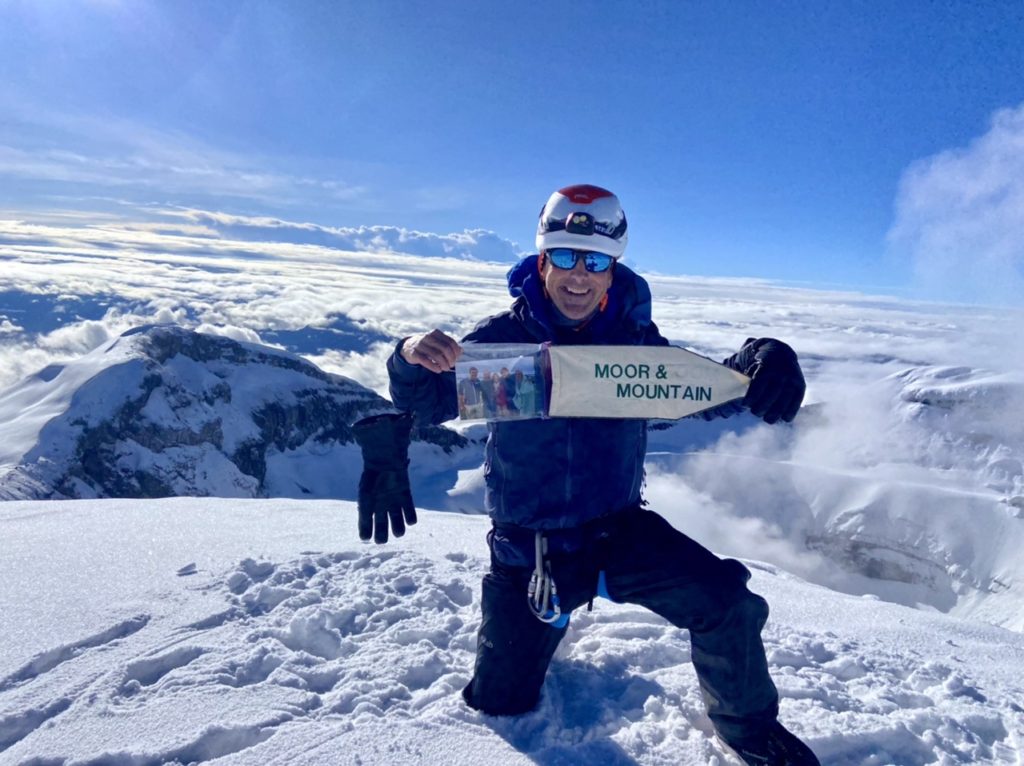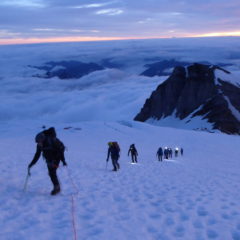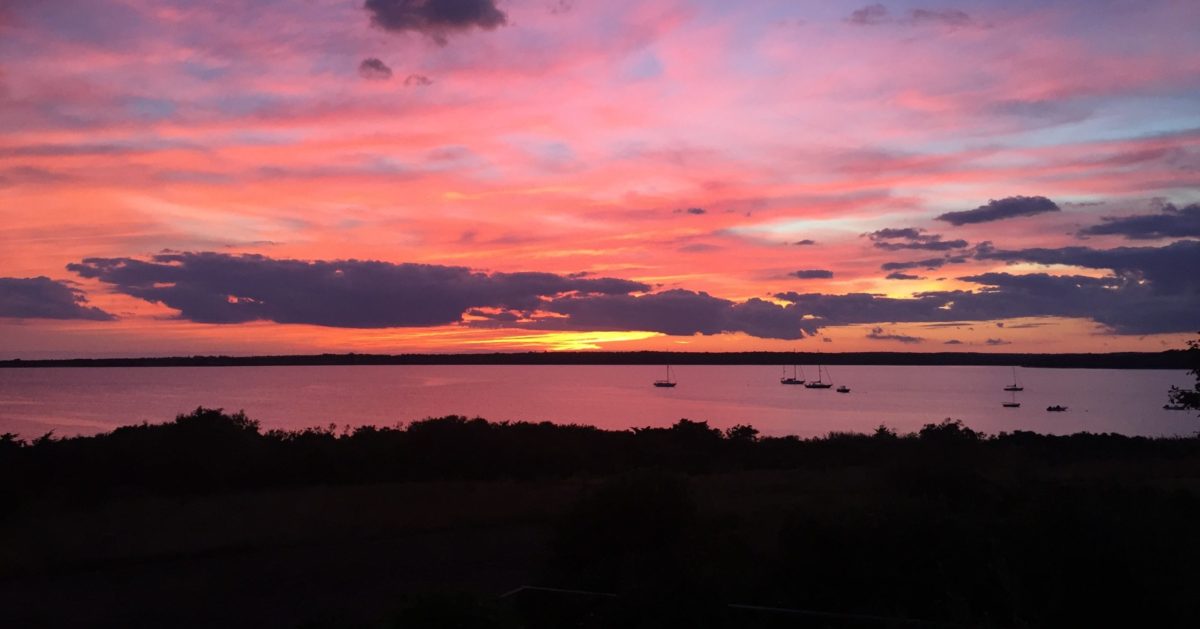When my friend Mark asked if I wanted to climb Cotopaxi with him on his 60th birthday, it didn’t take long to say yes. We had climbed together in Antarctica , were on Everest at the same time, and share a similar approach to finding joy and meaning in the mountains. I also welcomed an excuse to return to Ecuador, where I had last been in my early twenties working as an expedition travel leader. I loved its mix of Andean mountain towns, lush tropical valleys, windswept plateaus, and snow covered volcanoes.
Cotopaxi is an iconic, 19,300 foot high volcano in the middle of a beautiful national park. Before climbing it, we would spend a week climbing smaller volcanoes to get our bodies ready for higher altitude. We would travel through picturesque valleys and stay in charming mountain haciendas. Mark’s girlfriend Darci would join us for the lower elevation hikes, then Mark and I would take on the big one. I could do it all in nine days, door to door from Boston. A trip was born.
Ten days ago, Jill dropped me at Logan airport. Late that night I was checking into my hotel in Quito. At an elevation of over 9,000 feet, surrounded by higher mountains, Quito is a neat mix of modern Ecuador and colonial history. While waiting for Mark and Darci to arrive, I spent a day walking around the city. It was a holiday celebrating the city’s founding in 1534 and the squares were full of people.
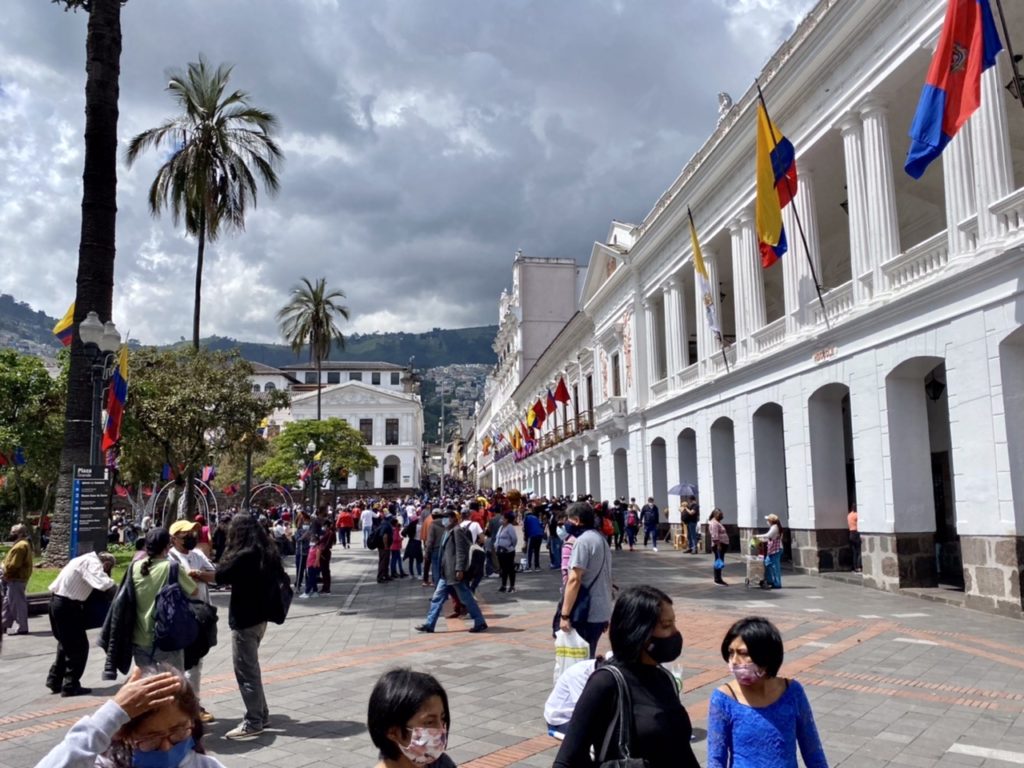
We spent a couple of days in Quito, getting used to 9,000 feet and doing fun hikes in the mountains above the city. Then we left the city and moved up to the highlands, where we stayed in neat mountain lodges and acclimatized with a progression of ever higher hikes and climbs.
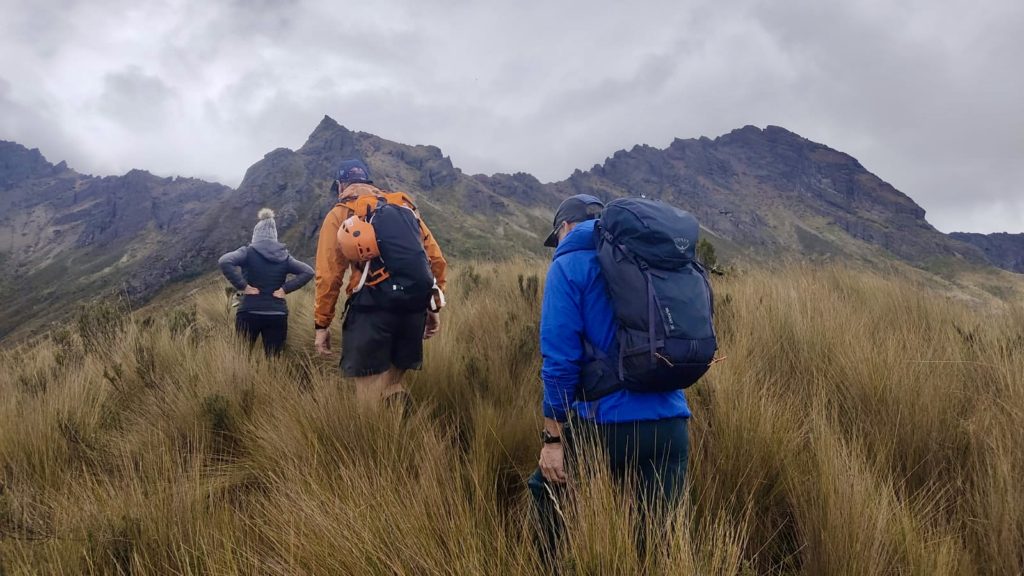
The weather in the highlands is constantly shifting. This is part of what makes climbing the volcanoes challenging, as you never know when they will be in the clear. One day Mark and I sprinted to the summit of a 15,000 foot volcano in advance of an approaching storm, then descended in heavy hail with lightening strikes all around us. Here is a photo of us on the summit just before the storm arrived.
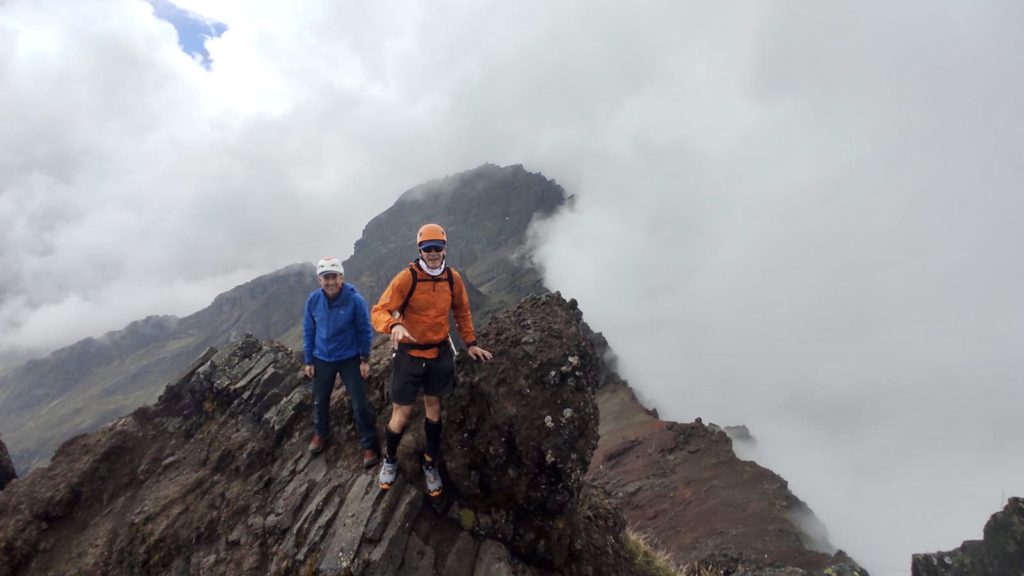
The highland roads are rugged. We used a variety of transportation approaches when rainstorms turned them into rivers.
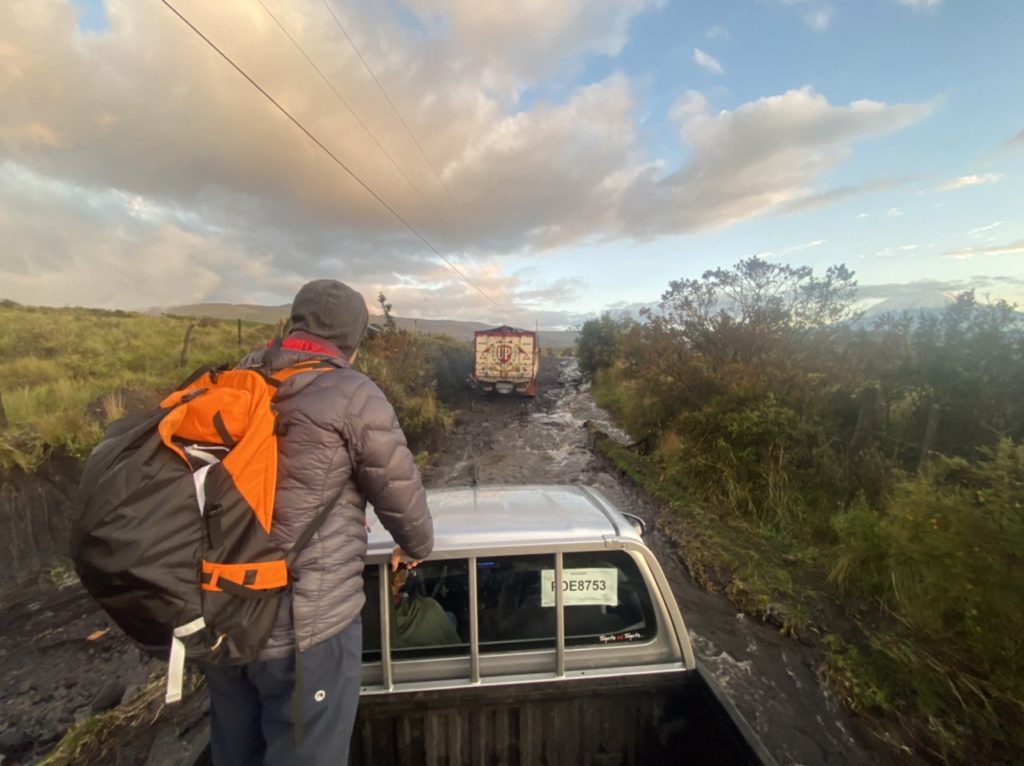
Another morning, I rolled out of bed to this view of Cotopaxi, as clear as it could possibly be. We were heading up it in a couple of days and would kill for conditions like this.
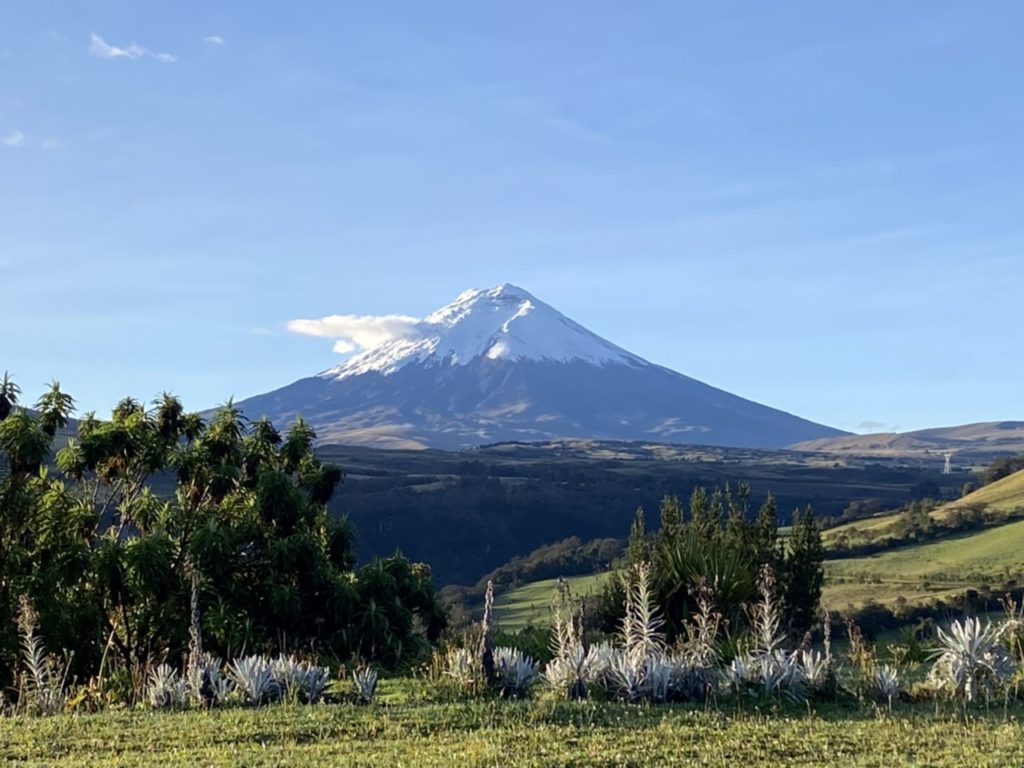
Among practitioners of endurance sports, there is the concept of “Type 1” and “Type 2” fun. Many of you are probably familiar with it. Type 1 is the kind of fun you experience in the moment, doing things that are immediately pleasurable. Powder ski runs and picnic lunches on top of sunny mountains are examples. Type 2 fun is the kind of activity where, at the time you are doing it, you are physically miserable and just want it to end, but – after you are done and reflect on it – it is deeply satisfying. Mountain climbing generally involves a mix of both types of fun, with the amount of Type 2 increasing with the size of the mountain. Climbing Everest was almost entirely Type 2 .
This was a Type 1 trip. In our acclimatization hikes we moved at a measured pace, stopped to enjoy the views, and returned to hot showers and delicious meals in charming surroundings. It was more of a vacation, and a nostalgic return to the adventure travel lifestyle of my youth. While Cotopaxi itself would be more of a challenge, it would still be well within our capabilities. We would spend one night in a hut part way up the mountain, then ascend to the summit and back in a single day. I looked forward to climbing a large mountain with a significant amount of Type 1 in the mix.
After a couple of final acclimatization climbs, we headed to the base of Cotopaxi. The mountains were back in the clouds and it was raining steadily, but that didn’t really concern us as the weather could change at any time. That afternoon, Mark, our guide David, and I hiked up to the mountain “refugio” at 15,700 feet, planning to leave for the summit that night. The hut was full of other climbers with similar plans.
The typical climbing time from the hut to the 19,300 foot summit is 6-7 hours. It is important to reach the top early, in order to descend safely before the sun creates significant avalanche risk. For this reason, most of the climbers were planning to leave between 11:00pm and midnight. Thinking that our climbing pace would be faster than many, David suggested we leave at 1:00am, targeting a 6:00am arrival at the summit. We ate an early dinner and settled into one of three communal bunk rooms for a few hours of sleep.
The scene in the bunk room was like mountain huts everywhere. People curled up in sleeping bags with nervous anticipation, mostly not sleeping, trying to ignore the snoring from those that were. We could hear the sound of wind and sleet hitting the roof, but assumed it would drop as the night went on. I actually managed to sleep a couple of hours, interrupted by successive waves of climbers getting out of their sleeping bags to get ready to leave. At 12:15am my alarm went off and it was our turn. I pulled on my clothes and climbing harness, ate a few handfuls of goldfish crackers, double checked my gear, and was out in the main room as planned shortly before 1:00am. The hut was largely empty, as all the other climbers had started up the mountain. This is when I learned that our plan needed to change.
The wind had let up somewhat but the sleet and freezing rain hadn’t. Monitoring the radio, David heard that the climbing teams who had left the hut earlier were struggling. Many were turning around. As we stood there, teams started re-appearing into the hut. Their climbing clothes were encrusted in ice. Beneath the ice they were drenched. Collectively, they were cold, miserable, and defeated. All of them confirmed that continuing to ascend in those conditions had been out of the question. Hearing this, David pushed our start time back to 2:00am, in hopes that conditions improved.
When 2:00am came, they hadn’t. The freezing rain hadn’t let up, and no one had climbed high enough to find out if it eventually stopped or turned over to snow. The hut was now full again with teams that had turned around. David, Mark, and I huddled in a corner and reviewed the situation. Even if the conditions eventually improved, we needed to reach the summit by 7:00am to assure a safe descent. “We have one final shot”, David said, “we wait until 3:00am and give it a try. You guys are strong enough that – if the conditions permit – I think we can get up in time”. I asked David: “what do you think the chances are that the weather improves and we reach the top”? “Less than 50 percent”, he answered.
I headed back to the bunk room and lay on my sleeping bag, fully clothed, climbing gear still on. Sleep was out of the question. It had been a great trip so far, but climbing Cotopaxi was the main goal: the organizing construct that gave purpose to the earlier hikes and charming haciendas. Six months ago, I failed to summit Everest due to the weather. This was the first big mountain I had been on since, and it was happening again. For all I preached that “not summiting due to weather is part of mountaineering”, and “the journey is as meaningful as the destination”, staring at twice in a row felt terrible. As I lay there waiting for 3:00am, I worked on mental constructs that would let me feel good about returning home not having summited.
As much as getting to the top meant to me, it meant more to Mark. He had carefully planned this trip around standing on the summit on his 60th birthday. A few days earlier, he had given me some additional context: “Ten years ago, my 50th birthday came and I was alone. My life was in a really bad place. The mountains gave me a way to put things back together. This climb is to celebrate how far I have come, and all the good things that have happened to me since”.
3:00 came. We zipped Gortex outer layers over warm inner layers, switched on headlamps, headed out the door, and started climbing. It would be an hour of ascending mixed rock and snow until we reached the glacier. Cotopaxi’s volcanic shape means that you climb relentlessly upward, at angles of 40-50 degrees, with no respite. The freezing rain immediately encrusted our outer layers, but felt manageable. It had lightened over the past hour.
We reached the full snow line and stopped to put on our crampons. Then we reached the glacier and roped up. From here on, we would need to pay careful attention to lurking crevasses. The rain continued to feel manageable.
We continued to ascend, moving quickly. Then Mark looked up and yelled: “stars!” We were breaking through into the clear. An hour later, we took a short break. Here is a photo of Mark sitting in the snow, watching the sun begin to push through the cloud layer below.
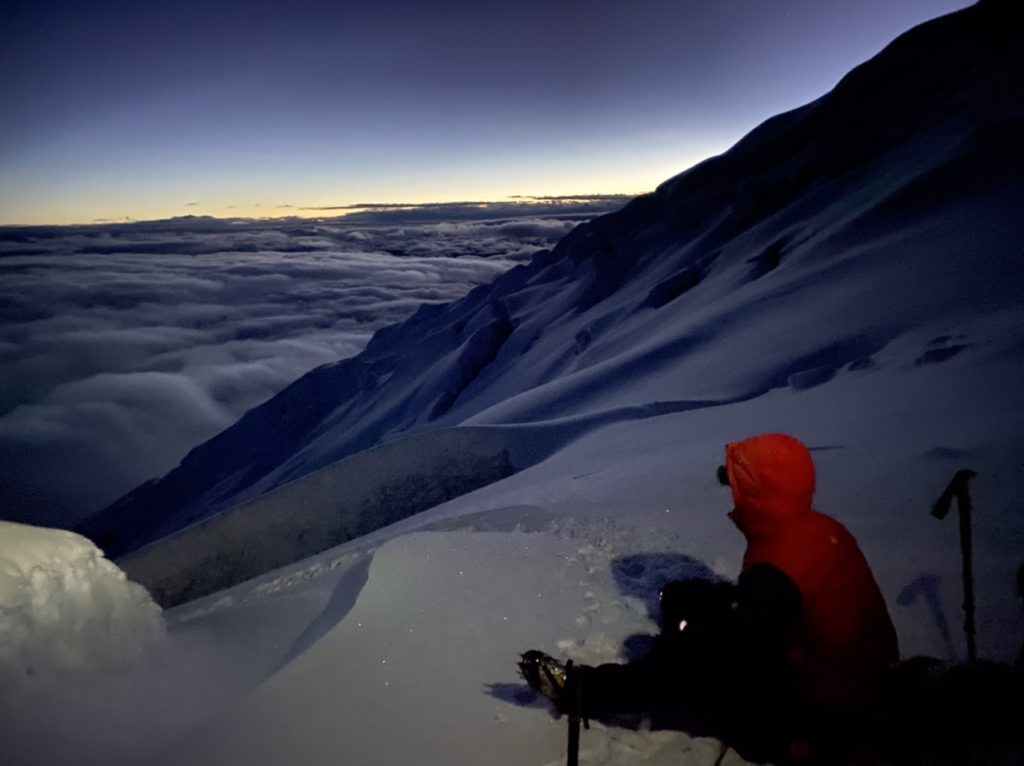
Things were breaking our way, but we had to keep moving to reach the summit by 7:00am. David set an aggressive pace and Mark and I did all we could to maintain it. In several spots, we needed to climb steep snow couloirs between towering ice blocks. Our legs burned and we gasped for air. Out of necessity, we were climbing far more rapidly than we would have if we had left the hut at 1:00am. It really hurt. I kept looking up to see if it would level out, but it didn’t. I just wanted it to be over. Very similar to how things felt on Everest. Type 2 fun.
The sun rose and we stopped again briefly to put on our glacier glasses. Then we rounded a cornice, looked up, saw a single ridgeline with nothing but blue sky behind it, smelled sulfur, and knew we were near the top. Shortly after 7:00 we were standing on the summit of Cotopaxi in brilliant sunshine. We had it to ourselves.
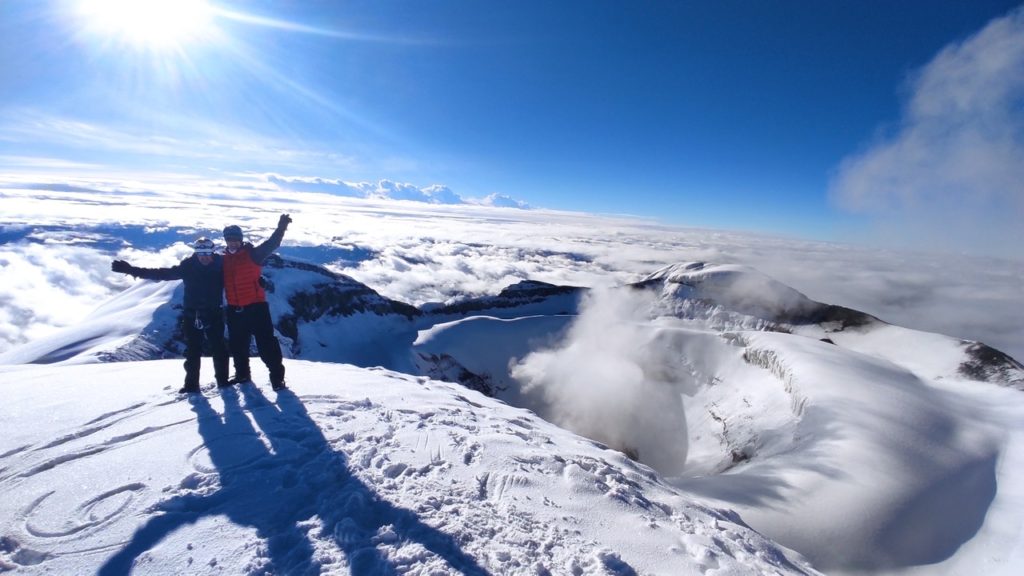
It is hard to describe how good it felt. This is why people climb mountains.
Then we had to get back down quickly. Avalanche risk was increasing. We descended non-stop, which was tough on the legs. The hut eventually came into view. We reached the snow line and stopped to take off our crampons. Suddenly, out of nowhere, I felt a wave of dizziness. I had a hard time standing up. Descending the final 20 minutes took every ounce of energy I had. I was completely worked. We had climbed round trip to the summit and back in six hours; the time most people take just to get to the top. That is pretty fast, especially for a 60 and 61 year old.
We stopped briefly in the hut to collect the rest of our gear, hiked down to the car, and had a celebratory breakfast at a small lodge at the base of the mountain. Mark and Darci headed south to the tropical town of Banos. David drove me back to Quito. I got a Covid test, showered, slept a few hours, and caught an early flight to Miami and Boston. Jill picked me up at the airport. At 7:00pm, 36 hours after Mark and I were standing on the summit, I was home in Dover.
One final photo. Long time readers may remember the flag that I planned to carry to the summit of Everest. It is from the backpacking equipment store my father owned when I was growing up, and has accompanied me to the top of a number of mountains. Sitting in my tent at Everest base camp, I used dental floss to attach a photo of Jill, John, Holly, Will, and me, taken on Jill’s and my 25th wedding anniversary. The flag and photo never made it to the top of the world. Maybe they will this spring, if things break my way. But they made it to the top of Cotopaxi. It felt great.
